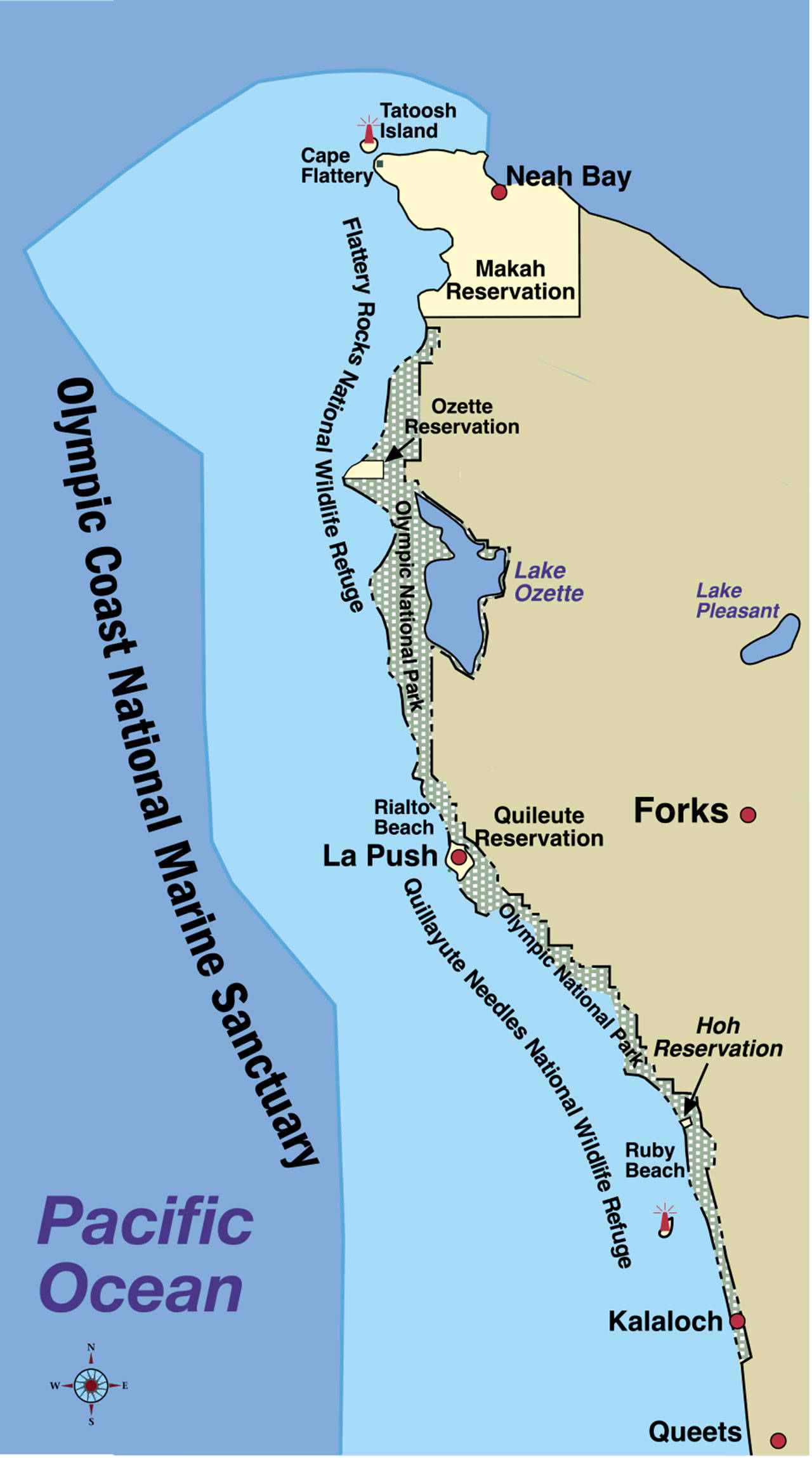TAHOLAH — A leading research team will explore the Quinault Canyon and other features of the Olympic Coast National Marine Sanctuary from Friday through Sept. 4.
Anyone with an internet connection can follow the action as it unfolds at www.NautilusLive.org.
Capt. Robert Ballard, who is best known for discovering the RMS Titanic in 1985, and his “Corps of Exploration” will lead the 2½ week study aboard the exploration vessel (EV) Nautilus.
“It’s a very exciting and unusual opportunity.”
The project is a partnership between the National Oceanic and Atmospheric Administration (NOAA) Office of National Marine Sanctuaries, NOAA Northwest Fisheries Science Center, Ballard’s Ocean Exploration Trust and the Quinault Indian Nation.
The Nautilus crew are using remotely operated vehicles, or ROVs, to map and explore deep-water habitats and the site of a sunken World War II submarine.
“Basically it’s putting eyes on an area that has never been explored like that before,” Quinault spokesman Steve Robinson said.
Scientists will investigate ocean acidification, look for harmful algae blooms and measure water temperature, oxygen and salinity from the 211-foot vessel.
“And they might find a sunken boat or something of that nature,” Robinson said in a Friday interview.
The Quinault tribe will use information from the exploration in its salmon recovery efforts.
“Quinault Nation is very pleased to be associated with this project,” President Fawn Sharp said in a press release.
The NOAA study will focus on about 3 percent of the Olympic Coast National Marine Sanctuary in rocky/reef areas with persistent habitat, sanctuary Research Coordinator Jenny Waddell said.
The idea is to get a sense of the resources that exist in inaccessible areas such as the Quinault Canyon, a deep gorge that cuts into the continental shelf off the coast of north Grays Harbor County.
“Nobody’s been to these locations ever before, so we really don’t know what to expect,” Waddell said Friday.
The Olympic Coast National Marine Sanctuary received funding for a similar exploration two years ago.
“This year, we were able to double the days at sea that we have,” Waddell said.
The Nautilus will spend half of its time at the sanctuary exploring the Quinault Canyon.
The other days will be spent in areas to the north at Quileute Canyon, Juan de Fuca Canyon and the USS Bugara, a World War II submarine that sank near Cape Flattery while being towed in 1970.
The Nautilus transmits real-time video from its ROVs and large control room to a satellite, allowing the public to observe underwater dives as they happen.
Highlights of previous dives will be posted on www.NautilusLive.org.
Events are being planned for Quinault students and other groups to communicate with scientists on board the research vessel.
“The cream on the top of the coffee cup is really the telepresence ability,” Bernthal said of the ship’s communications technology.
The Nautilus arrives at the Olympic Coast National Marine Sanctuary after stops at the Channel Island and Cordell Bank sanctuaries in California.
Ocean acidification will be a point of emphasis in the study off the Washington coast.
“We need to get a better picture of what the acidification level is,” Johnson said.
Sharp said there is evidence that ocean conditions caused by climate change have resulted in diminished returns of salmon to coastal rivers.
“It is one of our top goals to restore our salmon, especially the blueback, a sockeye subspecies unique to our Quinault River,” Sharp said.
“Quinault Nation has been working hard to assure salmon have a good home to come back to in our rivers. It’s just as important for them to have favorable conditions when they are in their ocean voyage stage.
“This kind of research is an important part of that effort, and we greatly appreciate the work the scientists are doing,” Sharp added.
________
Reporter Rob Ollikainen can be reached at 360-452-2345, ext. 56450, or at rollikainen@peninsuladailynews.com.

